What's New - Jaejun Yu
- Recent developments and additions to Jaejun's home page:
2008.11: (in collaboration with Prof. T. W. Noh's group)
"Dimensionality-Controlled Insulator-Metal Transition and Correlated Metallic State in 5d Transition Metal Oxides Srn+1 Irn O3n+1 (n = 1, 2, and [infinity])" , S. J. Moon, H. Jin, K. W. Kim, W. S. Choi, Y. S. Lee, J. Yu, G. Cao, A. Sumi, H. Funakubo, C. Bernhard, and T. W. Noh, Physical Review Letters 101, 226402 (2008.11).
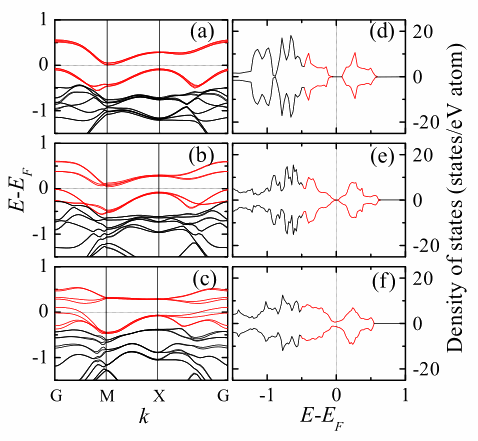
We investigated the electronic structures of the 5d Ruddlesden-Popper series Srn+1Irn O3n+1 (n = 1, 2, and oo) using optical spectroscopy and first-principles calculations. As 5d orbitals are spatially more extended than 3d or 4d orbitals, it has been widely accepted that correlation effects are minimal in 5d compounds. However, we observed a Mott insulator-metal transition with a change of bandwidth as we increased n.
2008.10:
"Breakdown of half-metallic ferromagnetism in zinc-blende II-V compounds: First-principles calculations", Yun Li and Jaejun Yu, Physical Review B (Condensed Matter and Materials Physics) 78, 165203 (2008.10).

We investigated the electronic and magnetic properties of a series of zinc-blend II-V compounds by carrying out density-functional theory calculations including spin-orbit couplings. Contrary to the case of CaN and CaP, the half-metallic characteristics of the II-V compounds such as CaBi were found to be destroyed. Our analysis of the valence-band structures of CaAs, CaSb, and CaBi revealed a critical role of the spin-orbit coupling interactions on the exchange-split band structure, thereby leading to breakdown of the half-metallic ferromagnetism for the systems with heavier group V elements in the zinc-blend II-V compounds.
2008.08: (in collaboration with Profs. J.H. Park, T. W. Noh, and S.-J. Oh's groups)
"Novel Jeff = 1/2 Mott State Induced by Relativistic Spin-Orbit Coupling in Sr2 IrO4 ", B. J. Kim, Hosub Jin, S. J. Moon, J.-Y. Kim, B.-G. Park, C. S. Leem, Jaejun Yu, T. W. Noh, C. Kim, S.-J. Oh, J.-H. Park, V. Durairaj, G. Cao, and E. Rotenberg, Physical Review Letters 101, 076402 (2008.8).
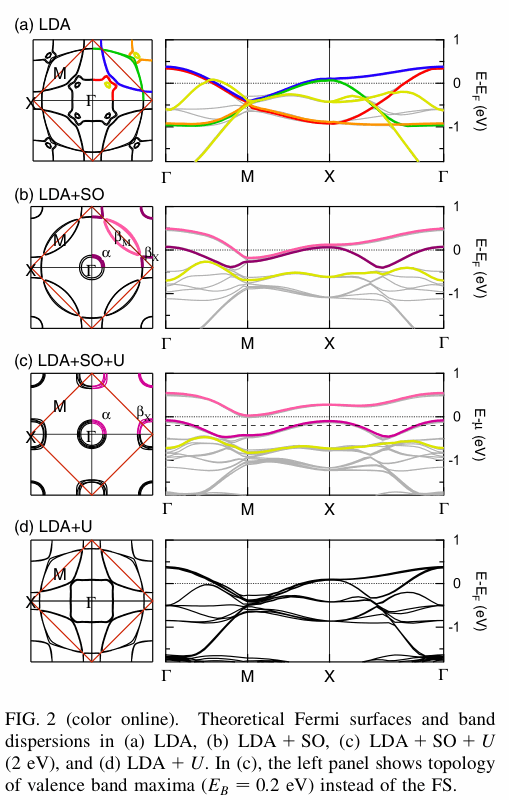
We investigated the electronic structure of 5d transition-metal oxide Sr2 IrO4 using angle-resolved photoemission, optical conductivity, x-ray absorption measurements, and first-principles band calculations. The system was found to be well described by novel effective total angular momentum Jeff states, in which the relativistic spin-orbit coupling is fully taken into account under a large crystal field. Despite delocalized Ir 5d states, the Jeff states form such narrow bands that even a small correlation energy leads to the Jeff = 1/2 Mott ground state with unique electronic and magnetic behaviors, suggesting a new class of Jeff quantum spin driven correlated-electron phenomena.
2008.06:
"First-principles effective Hamiltonian for ferroelectric polarization in BaTiO3 /SrTiO3 superlattices", Jun Hee Lee, Umesh V. Waghmare, and Jaejun Yu, Journal of Applied Physics 103, 124106 (2008.6).
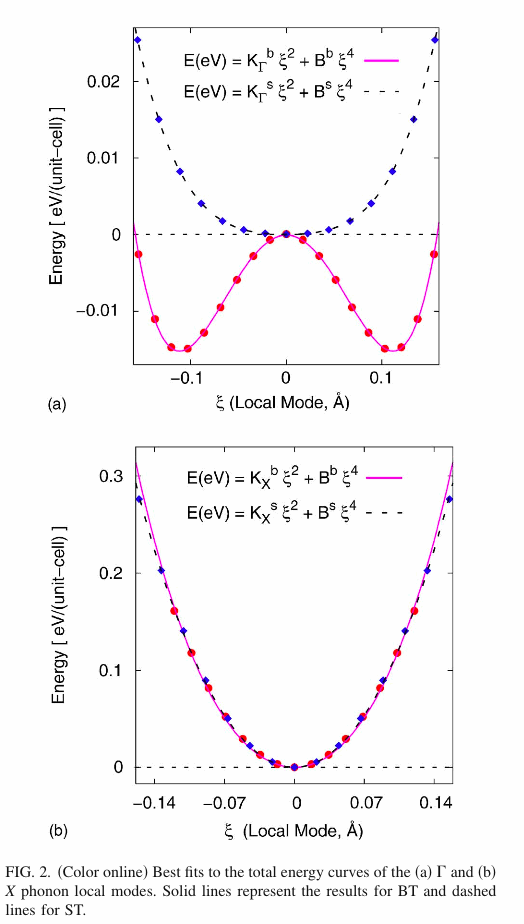
We present an effective Hamiltonian for the description of ferroelectric polarizations in perovskite oxide superlattices. To understand the ferroelectric behavior of (BaTiO3)n/(SrTiO3)m superlattices, we constrained the local distortion modes along the c direction only and set up the effective Hamiltonian based on the local modes that capture the physics of long-wavelength acoustic modes strain and lowest energy transverse optical phonon modes soft modes as prescribed by the localized Wannier functions. All the parameters in this effective Hamiltonian were predetermined from the first-principles density-functional theory calculations of each BaTiO3 and SrTiO3 components. This effective Hamiltonian procedure can provide guidance for developing ferroelectric model of other kinds of oxide superlattices.
2007.11.07: (in collaboration with Prof. A.J. Freeman)
"Interface electronic structure, two-dimensional metallicity, and possible interface superconductivity in CuCl/Si superlattices", S.H. Rhim, R. Saniz, Jaejun Yu, Lin-Hui Ye and A.J. Freeman, Physical Review B 76, 184505 (2007). doi:10.1103/PhysRevB.76.184505
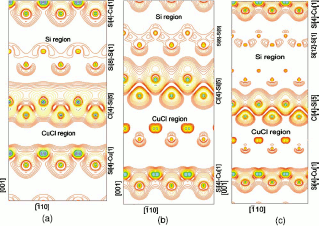
We predict a two-dimensional metallicity, and possible superconductivity
in CuCl/Si superlattices for 111 and 001 directions via a density
functional theory calculations based on FLAPW methods.
The feature of two-dimensional 2D metallicity arises from the charge transfer at the interfaces between CuCl and Si, where there is the valence charge imbalance. The 2D features are well evidenced by band structure, Fermi surfaces, and charge densities. Furthermore, to investigate possible superconductivity, we use McMillan formula to estimate TC, and evaluate the electron-phonon coupling constant, using the rigid muffin-tin approximation. From our calculations, it is the interfaces that contribute to all intriguing physics: 2D metallicity, charge transfer, nonvanishing Hopfield parameter, and electron-phonon coupling.
2007.11.15-17:
The 8th Korea-Japan-Taiwan Symposium on Strongly Correlated Electron Systems: Physics of Mutual Interacting Complex Materials and their Nano-Structure, Hyatt Regency, Incheon, Korea, 15–17 November 2007 http://cscmr.snu.ac.kr/kjt2007
2007.11.02: (in collaboration with Dr. Gun-Do Lee)
"Formation of carbon nanotube semiconductor-metal intramolecular junctions by self-assembly of vacancy defects", Gun-Do Lee, Cai-Zhuang Wang, Jaejun Yu, Euijoon Yoon, Nong-Moon Hwang and Kai-Ming Ho, Physical Review B 76, 165413 (2007). doi:10.1103/PhysRevB.76.165413
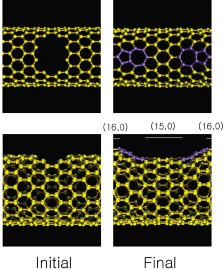
Atomistic processes of carbon nanotube semiconductor-metal
intramolecular junction formation are investigated by tight-binding
molecular dynamics simulations and first-principles total energy
calculations.
We show that the junctions can be formed by reconstruction of vacancy clusters through a series of generalized Stone-Wales transformations. Our simulations suggest a mechanism for synthesis of carbon nanotube semiconductor-metal intramolecular junctions with specific locations and controlled sizes and show the possibility of application to nanoelectronic devices. Our simulations study also provides a microscopic explanation to the superplastic deformation in single-wall carbon nanotubes.
2007.10.15:
"A Spin-Dependent Local Moment Approach to Anderson Impurity Model", Choong H. Kim and Jaejun Yu, J. Phys.: Condes. Matter 19, 456203 (2007) http://www.iop.org/EJ/abstract/0953-8984/19/45/456203/
<img width=200 hspace=20 vspace=20 src="depot/arxiv.0709.1187-fig4.gif" align="left">
We present an extension of the local moment approach to the Anderson impurity model with spin-dependent hybridization.
By employing the two self-energy description, Choong H. Kim determined self-consistent ground states through the variational minimization of ground state energy. The result of our spin-dependent local moment approach to applied a quantum dot system coupled to ferromagnetic leads are in good agreement with the previous work of numerical renormalization group calculations.
2007.09.10: (in collaboration with Prof. T. W. Noh's group)
"Ferroelectricity in Artificial Bicolor Oxide Superlattices", S.S.A. Seo , J.H. Lee , H.N. Lee , M.F. Chisholm , W.S. Choi , D.J. Kim , J.Y. Jo , H. Kim , Jaejun Yu , and T.W. Noh, Advanced Materials 19, 2460 (2007) http://dx.doi.org/10.1002/adma.200601357
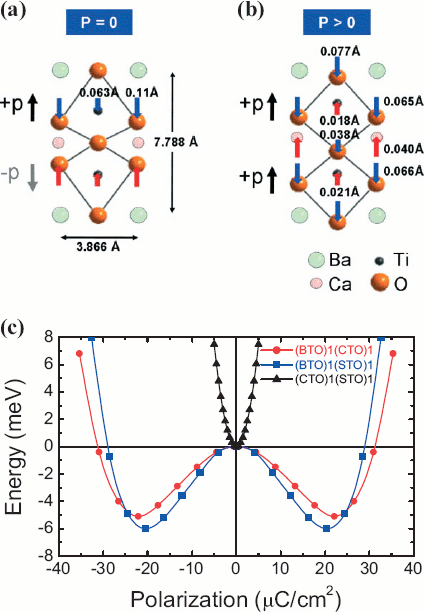
Recently advanced techniques in complex oxide synthesis also made similar
breakthroughs, providing new opportunities to search for new intriguing
physical properties. There have also been advances in modeling and
computational tools to explore physical properties of ferroelectric
oxides.
Jun Hee Lee in our group has carried out the first-princciples calculations for the one-unit-cell period bicolor (BTO)/(STO), (BTO)/(CTO), and (STO)/(CTO) superlattices and has provided a microscopic picture in understanding the ferroelectric polarizations.
2007.09.01:
"Spin-Dependent Local Moment Approach to Anderson Impurity Model", Choong H. Kim and Jaejun Yu, arXiv:0709.1187 [cond-mat.str-el] (2007). http://arxiv.org/abs/0709.1187
<img width=200 hspace=20 vspace=20 src="depot/arxiv.0709.1187-fig4.gif" align="left">
We present an extension of the local moment approach to the Anderson impurity model with spin-dependent hybridization.
By employing the two self-energy description, Choong H. Kim determined self-consistent ground states through the variational minimization of ground state energy. The result of our spin-dependent local moment approach to applied a quantum dot system coupled to ferromagnetic leads are in good agreement with the previous work of numerical renormalization group calculations.
2007.08.15: (in collaboration with Prof. T. W. Noh's group)
"Electronic structures of hexagonal RMnO3 (R = Gd, Tb, Dy, and Ho) thin films", W. S. Choi, D. G. Kim, S. S. A. Seo, S. J. Moon, D. Lee, J. H. Lee, H. S. Lee, D.-Y. Cho, Y. S. Lee, P. Murugavel, Jaejun Yu & T. W. Noh, arXiv:0708.2318v1 [cond-mat.str-el] (2007). http://arxiv.org/abs/0708.2318
<img width=200 hspace=20 vspace=20 src="depot/arxiv.0708.2318.gif" align="left">
We investigated the electronic structure of multiferroic hexagonal RMnO3 (R = Gd, Tb, Dy, and Ho) thin
films using both optical spectroscopy and first-principles calculations. One of the difficulties in explaining the
electronic structures of hexagonal RMnO3 is that they exist in nature with limited rare earth ions (i.e., R = Sc, Y,
Ho - Lu), so a systematic study in terms of the different R ions has been lacking.
Dong Geun Kim in our group has contributed to the work by carrying out first-principles calculations of hexagonal RMnO3 based on LDA+U methods. From the calculation results, the low-lying optical absorption peaks were identified to correspond to inter-site transitions from the oxygen states hybridized strongly with different Mn orbital symmetries to the Mn 3d<sub>3z2-r2</sub> state.
2007.08.01: (in collaboration with Prof. Kwon Park (KIAS) and Prof. Y.B. Kim (Toronto))
"Doped Valence Bond Solid and Superconductivity on the Shastry-Sutherland Lattice", Bohm-Jung Yang, Yong Baek Kim, Jaejun Yu and Kwon Park, arXiv:0707.1392v1 [cond-mat.str-el] (2007). http://arxiv.org/abs/0707.1392v1
<img width=200 hspace=20 vspace=20 src="depot/arxiv.0707.1392.fig1.gif" align="right">
The fate of doped Mott insulators is one of the most challenging issues in correlated electron physics, especially in relation to the long-standing problems of hightemperature cuprate superconductivity.
We present a theoretical framework for understanding the ground states of the doped Mott insulator on the Shastry-Sutherland lattice. To study the doping effect, Bohm-Jung Yang has analyzed the t-J-V model via the bond operator formalism and showed that novel superconducting states emerge upon doping with their properties crucially depending on the underlying valence bond order.
Date: 2009-01-03 17:43:48 KST
HTML generated by org-mode 6.16c in emacs 22

